
James Robinson Risner was a man of humble origins, son of an Arkansas sharecropper, educated at secondary school level, not particularly ambitious, a common man save for two things: He could fly the hell out of an airplane; and, under terribly difficult circumstances as a Prisoner of War in North Vietnam, he rose to a level of heroic leadership matched by few men in American military history.
Born in Mammoth Springs, Arkansas on Jan. 16, 1925 and raised in a religious family, Robinson Risner made his first critical life choice between attending Bible College or joining the Army Air Forces during World War II. When he passed the tough entrance exam for pilot training by one point, his future aloft was set.
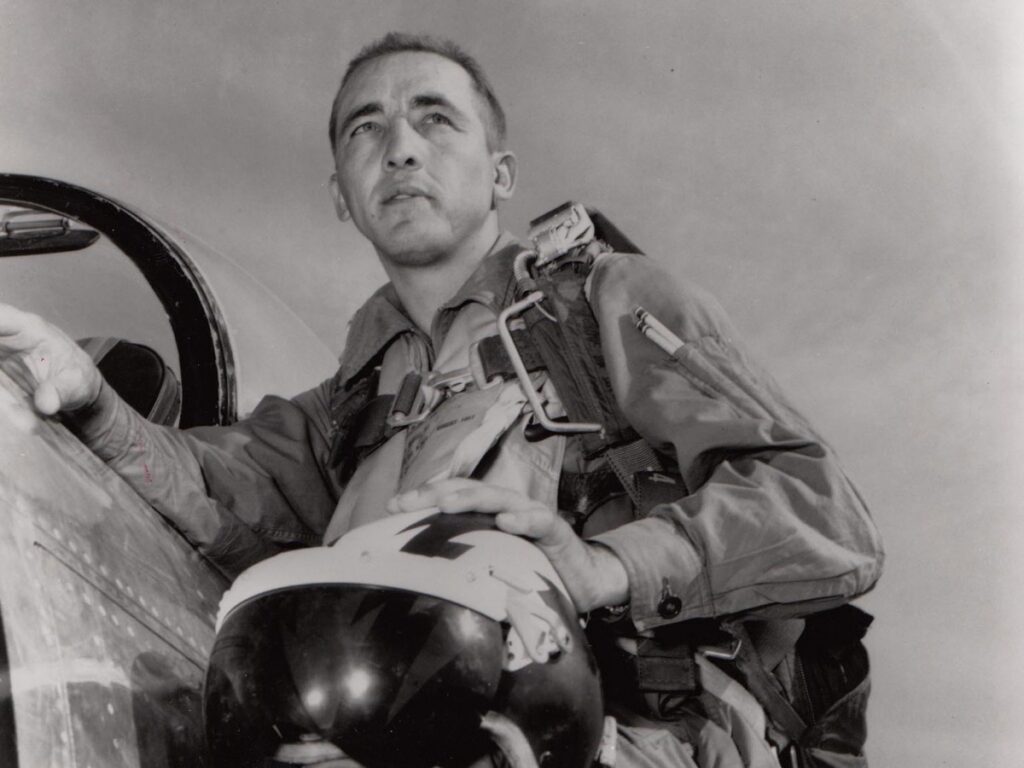
Flying came easily to the gifted trainee, which led to a coveted assignment flying fighters after graduation. But Robbie’s repeated requests for combat duty were ignored by the Army’s personnel system, and he spent the rest of the war defending the Panama Canal.
Postwar peace and return to civilian life brought mundane employment for Robinson Risner as an auto mechanic, a service station manager and a short stint running a service garage. He also became a P-51 Mustang pilot in the Oklahoma Air National Guard.
Robinson Risner’s Awards In The Korean War
When the Korean War began, he wangled his way out of the Oklahoma Air National Guard and arrived in Korea on May 10, 1952, where he was assigned to the 15th Reconnaissance Squadron at Kimpo Air Base. In June, when the 336th Fighter-Interceptor Squadron, also at Kimpo, sought experienced pilots, he arranged a transfer to 4th Fighter Wing.
Robinson Risner was often assigned to fly F-86E-10 Sabrejet, nicknamed ‘Ohio Mike’ and bearing a large cartoon rendition of Bugs Bunny as nose art, in which he achieved most of his aerial victories
On Sept. 15, 1952, his fighter unit found itself in a fierce dogfight over the Yalu River near the East China Sea when he noticed that the plane of his wingman, 1st Lt. Joseph Logan, had been hit and was leaking fuel. They were 60 miles from friendly territory and he knew his fellow pilot would never make it.
Amid heavy flak from antiaircraft fire, Risner maneuvered his jet behind Logan’s and, at a speed of more than 200 mph, placed the nose of his plane in the tailpipe of the damaged plane. Through turbulence and with leaking oil splattering his cockpit canopy, he pushed Logan’s powerless plane until they were beyond enemy territory and within reach of U.S. troops. Logan bailed out over water but became tangled in his parachute lines and drowned before he could be rescued.

On September 21, 1952, he shot down his fifth MiG. In October, Robinson Risner was promoted to Major and named Operations Officer of the 336th Fighter-Interceptor Squadron. Risner flew 108 missions in Korea and was credited with the destruction of eight MiG-15s, his final victory occurring January 21, 1953
It was his heroics of the Korean War that put “Robbie” Risner’s name on the map of aerial warriors of that era and earned him the title of the 20th Ace of the War. It was according to him, the most gratifying period of his life.
While the Korean War may have been Risner’s favorite period, it was by no means the most consequential in the lives of others. It would take another war, and an extraordinary set of circumstances for that to occur.
As storm clouds gathered over Southeast Asia in 1964, Risner arrived in the region, as if on cue, to take command of a fighter-bomber squadron in preparation for the larger war nearly everyone saw coming.
Robinson Risner And His Appreciable Performances
Early in the air war over North Vietnam, Robinson Risner led the first flight of Operation Rolling Thunder, a high-intensity aerial bombing of North Vietnam. Subsequent to that said he received his first Air Force Cross in April 1965 for leading air strikes against a strategic bridge in North Vietnam. Later that same month, “Robbie” was featured on the cover of Time magazine. He became in the eyes of others in the business one of two things: the perfect role model, or just plain crazy. All, however, held him in awe.
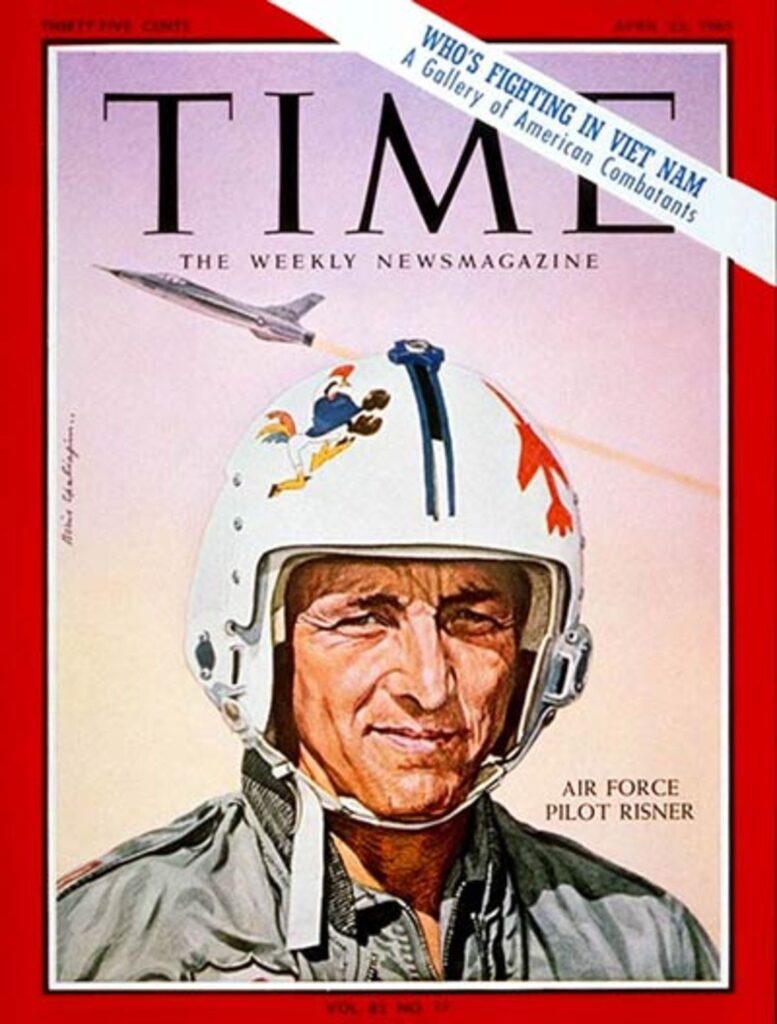
On March 22, 1965, while leading two flights of F-105s attacking a radar site near Vinh Son, North Vietnam, Risner was hit by ground fire when he circled back over the target. He maneuvered his aircraft over the Gulf of Tonkin, ejected a mile offshore, and was rescued after fifteen minutes in the water.
Then, in the most unlikely circumstances, came true greatness. Sometimes in history, a man emerges whom no one saw coming, one who rises to the awful challenge of crisis leadership when others are faltering and provides exactly the right strength of character, calming influence, and credible guidance out of the morass. But first, he must earn the respect and commitment of his subordinates by demonstrating a personal willingness to assume any risk, physical or moral, that he might later ask of his followers.
For Risner, this moment came on Sept. 16, 1965, during a raid over North Vietnam when his F-105 Thunderchief was hit by ground fire. He was forced to eject when the aircraft, on fire, pitched up out of control. He was captured by North Vietnamese while still trying to extricate himself from his parachute. He was on his 55th combat mission at the time.
Because of the Time cover story, he would become one of the highest-profile U.S. prisoners of the Vietnam War. Unfortunately, the Time magazine article featuring Risner made its way to his captors.
They told Risner there were only three people they would rather have as a captive: Lyndon Johnson, Robert McNamara or Dean Rusk. For the next 7 and a half years Robbie absorbed levels of torture and abuse those three could likely never have grasped, let alone endured.
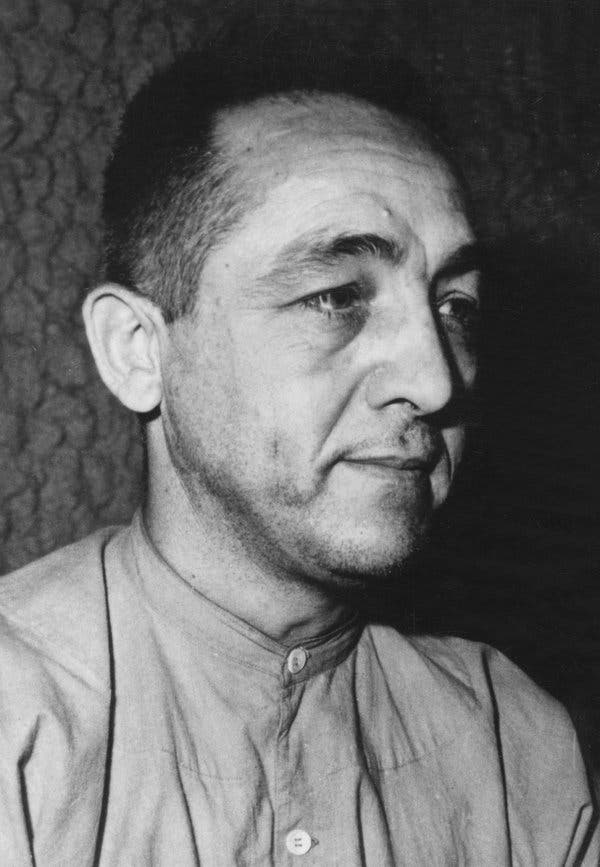
Following being shot down a second time and then captured, his arrival in the old French dungeons of Hanoi began the trial of his life, but also the leadership role that would be his legacy.
He had been beaten up and starved, thrown for months into a dark cell crawling with rats, held immobile with his legs pinned in stocks, and strapped with ropes so tightly that his right arm was torn from its socket. When he passed out from pain, the ropes were briefly loosened until the ordeal could start yet again.
Risner exercised as much as he could and “prayed by the hour,” he wrote in his 1973 memoir, “The Passing of the Night: Seven Years as a Prisoner of the North Vietnamese.” In the book he wrote, “I did not ask God to take me out of it, I prayed He would give me the strength to endure it.”
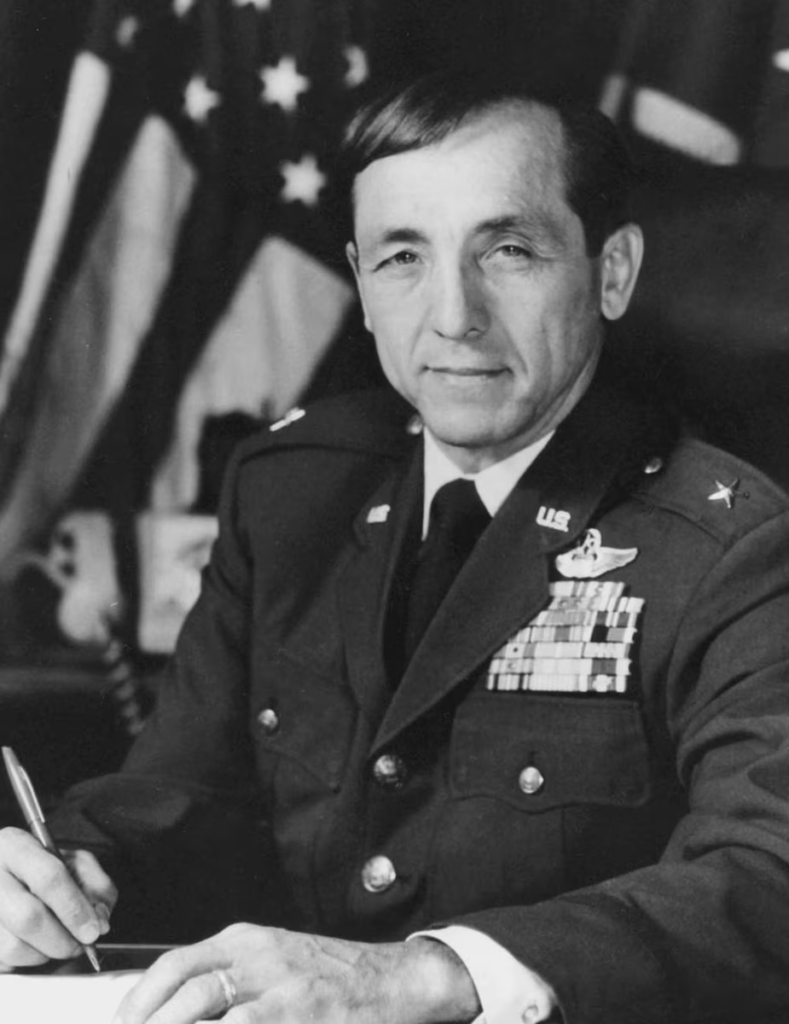
At the time of Robbie’s capture, there were 27 other Americans incarcerated in Hanoi, separated from each other, all doing their best to abide by the Code of Conduct for American Fighting Men. Once Risner determined that he was the senior ranking officer, he began to put structure and guidance into the POWs’ lives, a sense of order and community, the very thing their captors were trying desperately to prevent. He would pay a terrible price for that leadership when the guards would catch him communicating, but they couldn’t stop him. No matter how brutal the beatings, the next day he would be at it again.
In the early days he was generally held in that small cell block mentioned earlier, and since most new prisoners were held there temporarily, after initial interrogation and torture sessions, Risner used brief moments of guard absence to “induct” new men into his POW command.
According to fellow prisoner Charles G. Boyd (who retired as a four-star general), Risner told him his name and asked for his name and rank. Risner then said, “Learn the tap code, and here’s how it works, memorize it, and practice it, it’s vital.” Adding, “Eat everything they give you, no matter how disgusting; it’ll keep you alive. You’ve just been tortured, and that’s not the end of it; resist to the limits of your sanity, or to permanent physical damage. You’ll know when you get there.” And concluded: “And pray; if you haven’t been, start. We’re going to get through this, and I’ll see you when it’s over.”
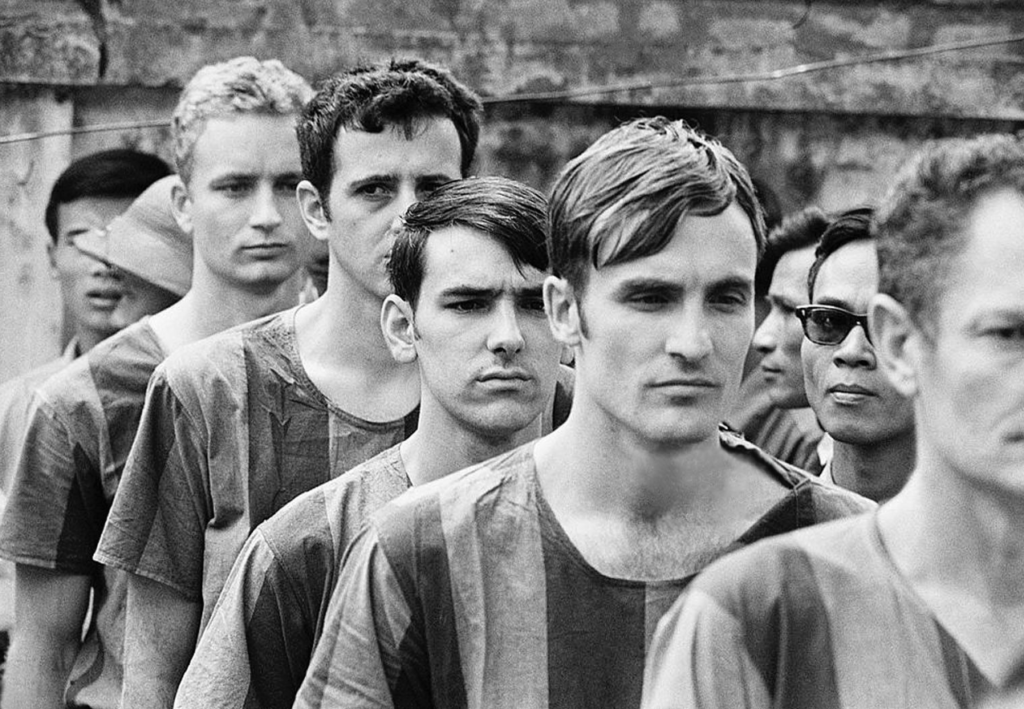
Using coded messages that could be passed with the flash of a hand or the whisk of the broom, Risner encouraged his several hundred fellow Americans at Hoa Lo “to hang tough and resist until you are tortured but never lose your ability to think.”
As a leader of the POWs, Risner set up committees, assigned tasks and helped set up communication systems through tapping, scraping walls and even coughing. Some prisoners reconstructed an abbreviated version of the Bible from memory. Others were tortured and never seen again.
Risner’s leadership was on display when he organized a forbidden worship service in 1971. Guards stormed into the cellblock and hauled Risner and two other organizers to certain torture. As they did, the 40 or so men in their cellblock burst into “The Star-Spangled Banner.” The other six cellblocks also erupted in the national anthem as the three were marched off. The proud strains rang out of the 15-foot walls of the camp and reverberated outside in the streets of downtown Hanoi.
Later on, as the POW organization grew, and prisoners were taken to other prisons throughout the country, Risner’s guidance would expand and continue to spread. Always it would make sense, be crisp and to the point. It was never threatening, always gentle and optimistic, like a loving father giving guidance to his son. Yet all he did, remained in a military framework, based on the core principle that each were fighting men with a code of honor that must be upheld.
Risner became the inspiration for all of the confused and scared young men in a very hostile environment. He was a guiding presence, a behavior yardstick, and he managed to achieve this without direct contact. He somehow conveyed to his fellow POWs that it was the right thing to do in order to survive with dignity and honor. But there is no doubt in that every last one of the POWs stood taller in Risner’s shadow, tougher in their own resistance, and come home better men as a result.
On Feb. 12, 1973, he was among the first group of prisoners to be released from North Vietnam. He said he would be ready to return to duty “after three good meals and a good night’s rest.”
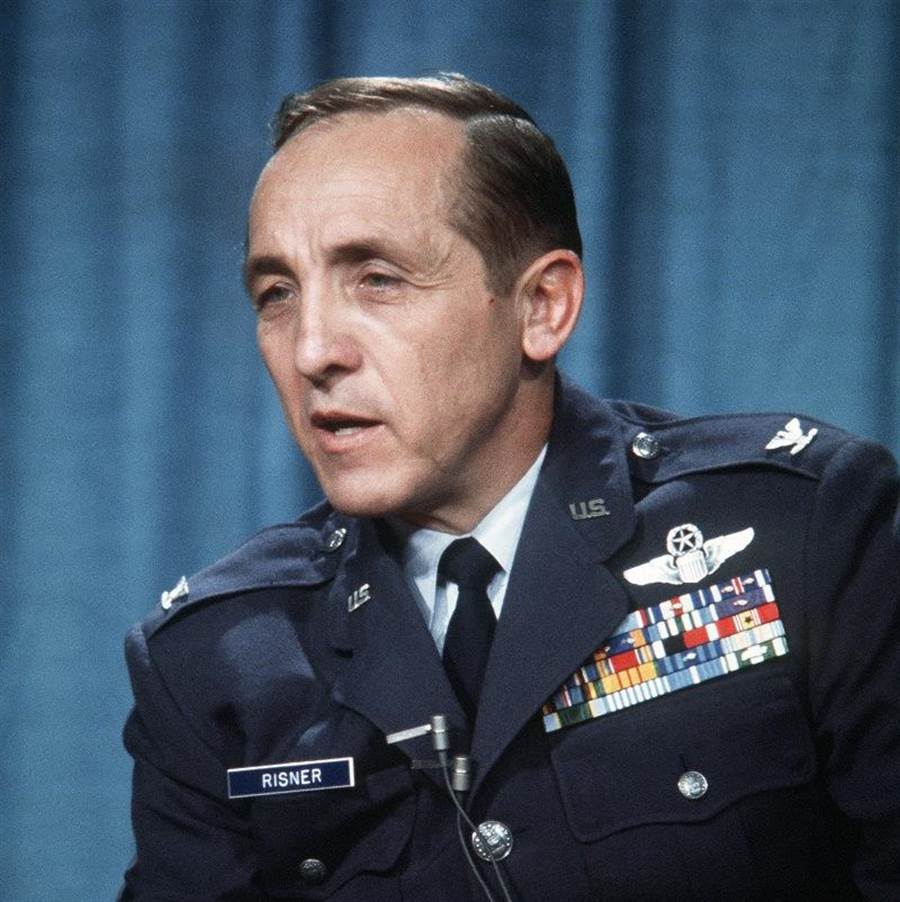
After Vietnam, Risner was promoted to the rank of Brigadier General and returned to the pilot’s seat and commanded several fighter training programs before his retirement in 1976.
Risner received two Silver Stars for his heroics and was one of only four airmen in history to receive more than one Air Force Cross, second only to the Medal of Honor for wartime heroism. In addition to his two Air Force Crosses and two Silver Stars, his decorations included the Distinguished Service Medal, three awards of the Distinguished Flying Cross and two Bronze Star Medals.
His second Air Force Cross wasn’t pinned to his chest until after he returned from the prison camp when it was awarded for his leadership as a POW.
Robinson Risner: Memory In The USA
After his military career, Risner lived for many years in Texas, where he was executive director of an anti-drug program. He often spoke at gatherings for veterans and Air Force pilots.
He was a close friend of the billionaire businessman and onetime presidential candidate H. Ross Perot, who commissioned a statue of Robinson Risner, which was installed at the U.S. Air Force Academy in Colorado Springs, on November 16, 2001. It was a reminder of the general’s strong leadership among the POWs.
The nine-foot bronze statue of Robinson Risner, sculpted by Lawrence M. Ludtke and mounted on a five-foot pedestal of black granite, commemorates Risner and other POWs who were punished for holding religious services in their room at the Hanoi Hilton on February 7, 1971, in defiance of North Vietnamese authorities.

It was no accident that the statue was nine-feet tall. When he and two other organizers were hauled away for being behind his comrades singing The Star Spangled Banner and God Bless America, Risner said, “I felt like I was nine feet tall and could go bear hunting with a switch.”
Risner, the highest-ranking American POW during most of his seven years, four months and 27 days behind bars, died in his sleep October 22, 2013, at his home in Bridgewater, Virginia three days after suffering a severe stroke. The retired brigadier general was 88-years-old. Survivors include his wife of 36 years, the former Dorothy Miller Williams, of Bridgewater; six children; a sister; and 14 grandchildren.
Risner was buried at Arlington National Cemetery on January 23, 2014, with fellow former POWs and current members of the 336th Fighter Squadron among those in attendance. Also in attendance was retired Gen. Charles G. Boyd, his fellow POW.
Read About Other Profiles in Courage
If you enjoyed learning about Brig Gen James Robinson Risner, we invite you to read about other profiles in courage on our blog. You will also find military book reviews, veterans’ service reflections, famous military units and more on the TogetherWeServed.com blog. If you are a veteran, find your military buddies, view historic boot camp photos, build a printable military service plaque, and more on TogetherWeServed.com today.
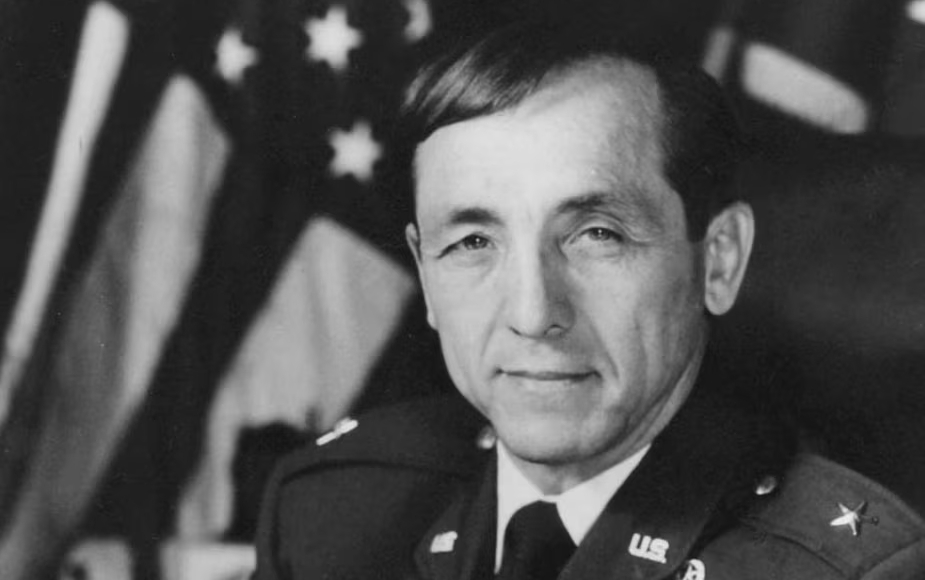
Error: On Feb. 12, 1973, he was among the first group of prisoners to be released from North Korea.
SHOULD READ :
On Feb. 12, 1973, he was among the first group of prisoners to be released from North Vietnam.
Thank you for pointing this out. Has been corrected.